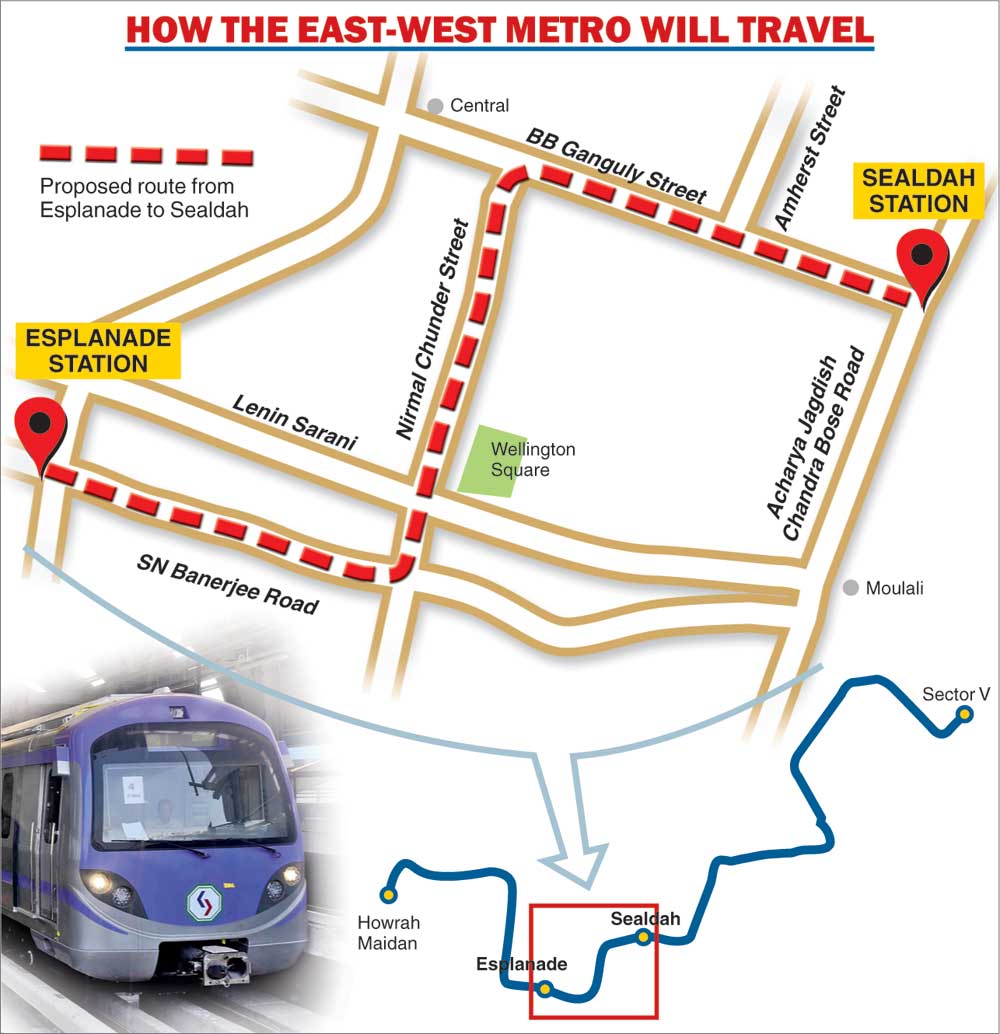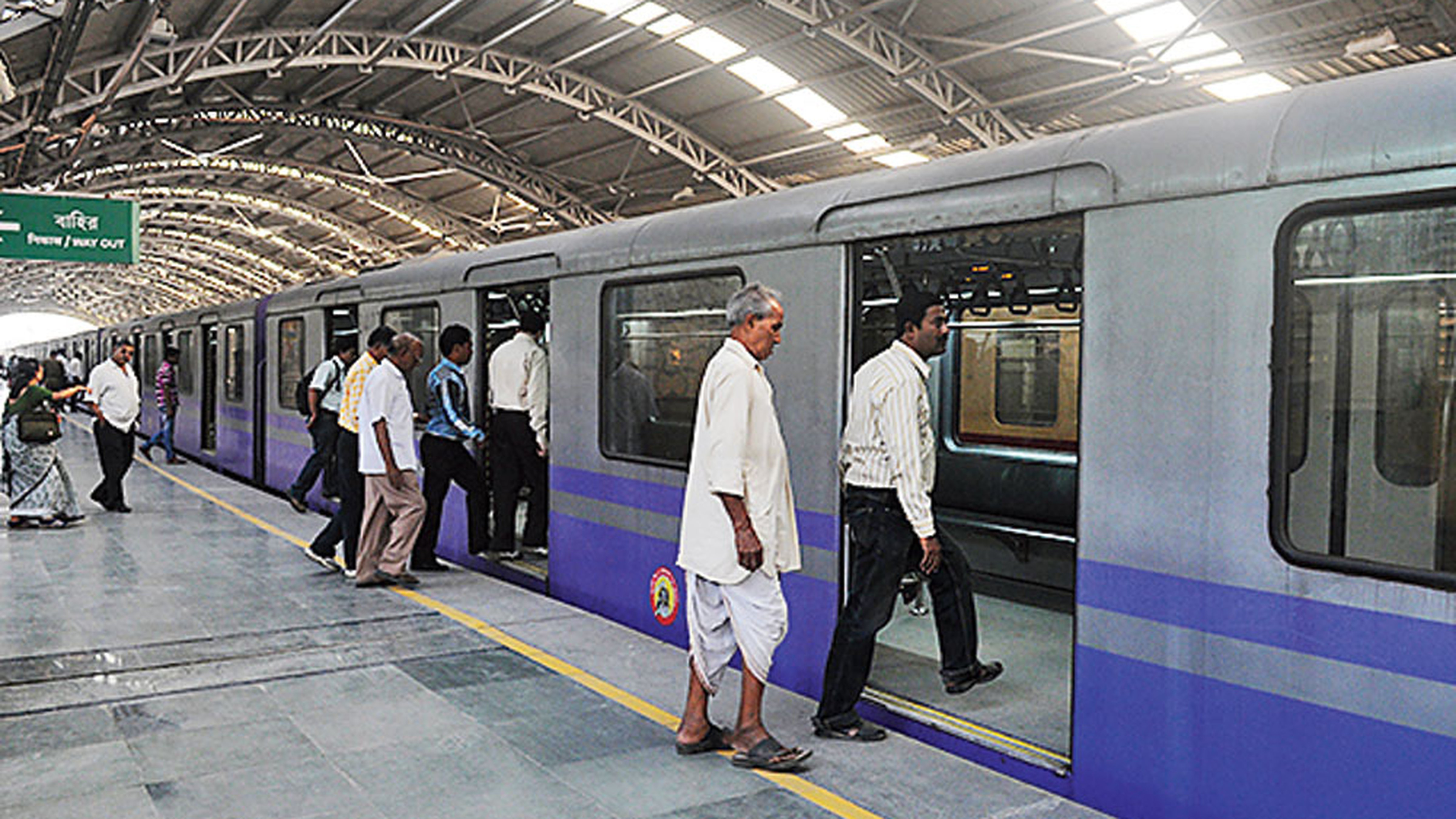The journey of the twin East-West Metro tunnels from Esplanade to Sealdah will take them under or close to more than 300 buildings, several of which are several decades old and might need to be evacuated before work starts.
Kolkata Metro Rail Corporation (KMRC), the implementing agency for the Metro corridor from Sector V to Howrah Maidan through the Hooghly riverbed, has commissioned a survey to ascertain the stability of the buildings along the Esplanade-Sealdah alignment.
A senior official said occupants of some of the buildings could have to shift elsewhere for the duration of the tunnelling operation, as was the case when the two machines burrowed their way to Esplanade through the Brabourne Road stretch.
Apart from commercial and residential buildings, many of which were found to be in a very weak condition, Brabourne Road had posed a challenge because of the presence of heritage structures along the route.
According to KMRC officials, 14 months is the estimated time required to complete the last lap of tunnelling. Metro highlights the engineering challenges along the way.

(Telegraph picture)
Shaky buildings
The 2.45km route from Esplanade to Sealdah starts at SN Banerjee Road and enters Nirmal Chunder Street on its way to BB Ganguly Street and onwards to Sealdah station. “Most buildings on this stretch are very old and we are conducting a technical survey to find out in what condition these structures are and whether their safety will be threatened in any way by tunnelling,” a KMRC official said.
The survey will take about two months, which is approximately the time the two tunnel boring machines will require to reach the intersection of SN Banerjee Road and Nirmal Chunder Street. The trickiest part of the route lies beyond this, mainly because of the higher density of buildings and the proximity of the tunnels to these structures.
Based on the findings of the technical survey, mitigation measures will be taken to prevent subsidence and cracks on the buildings. A senior KMRC official said they might need to temporarily evacuate the residents of those buildings. “The buildings that will require evacuation, if at all, are yet to be identified,” he clarified.
The 3.8km stretch between Howrah Maidan and Esplanade had 100-odd buildings, which in terms of density is far fewer than the structures that pose a challenge to tunnelling from Esplanade to Sealdah. Between Phoolbagan and Sealdah, another underground stretch of 2.73km, there are 50-odd buildings.
The KMRC official said the condition of some of the buildings along Brabourne Road was so bad that iron props had to be used to support those structures when the tunnel-boring machines moved underneath. The structural reinforcements have not been removed since. “The stretch between Esplanade and Sealdah does not have as many tall buildings as Brabourne Road does,” the official said.
Zigzag route
There are two reasons why the tunnel-boring machines will be taking a circuitous route instead of the shortest one.
According to an official, this is the only route through which aligning the tracks with the East-West Metro’s Sealdah hub was found to be feasible. “If the tracks go through SN Banerjee Road, the curves underground would be too sharp for trains to negotiate. The only technically feasible route is the one that has been finalised,” he said.
If the tunnels go below SN Banerjee Road and turn left from the Moulali crossing, they will have to cross a stretch under the Sealdah flyover with iron beams.
Depth factor
At Esplanade, the tracks will be 27m under the ground. They will climb up to 17m by the time Sealdah arrives.
If Sealdah station were to be built deeper then it will be, the cost of maintenance would be higher. For passengers, convenience would be lower in terms of access to the station.
Between Esplanade and Sealdah, there will be no station because of land constraints. A vent shaft is being built at Subodh Mullick Square (Wellington Square) to pump fresh air into the tunnel. The shaft will also function as an emergency evacuation point.

